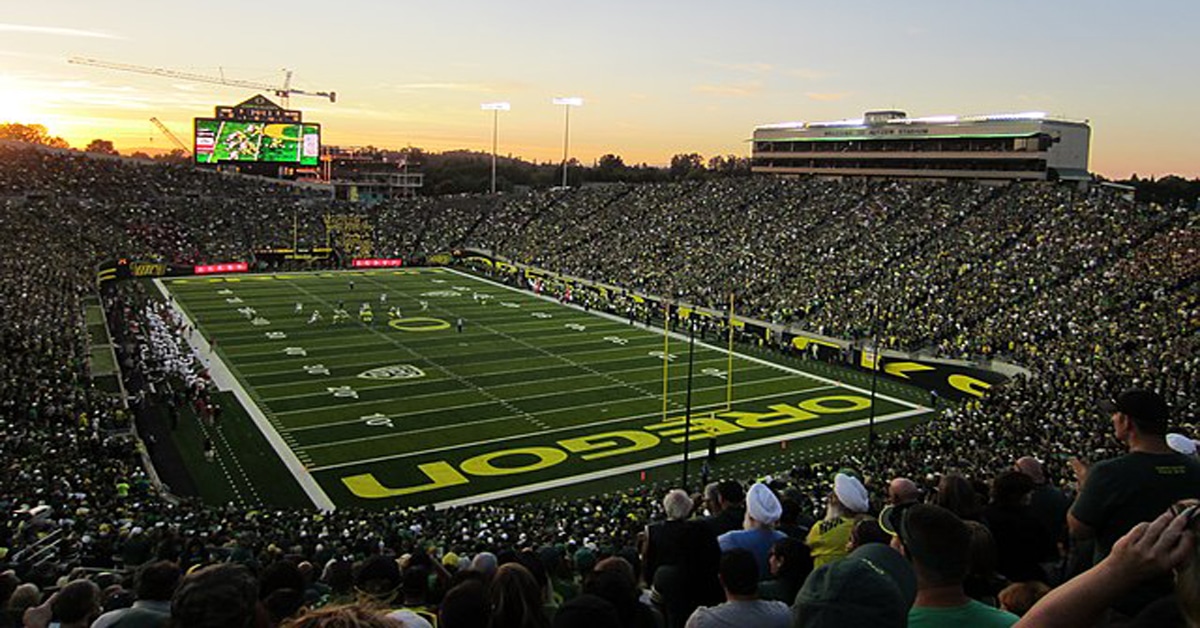The 10 Loudest College Football Stadiums
College Football stadiums are among the loudest arenas in sports. Some special stadiums are filled with raucous fans who can easily turn the tide for the home team.
Here’s a list of the ten loudest college football stadiums in the US. Check out the list below and read the history of these unique arenas.
10. Sanford Stadium- Georgia Bulldogs
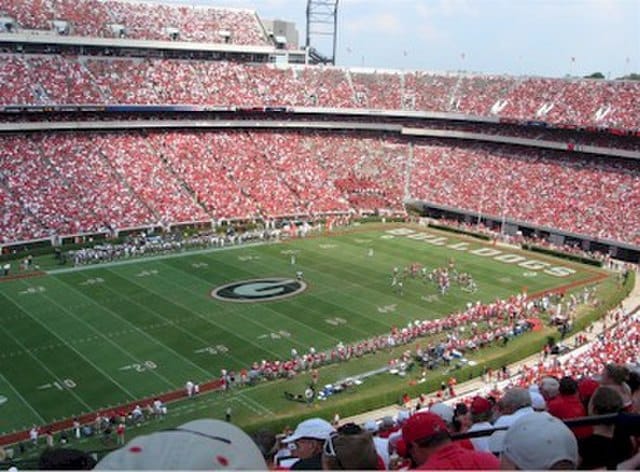
- Capacity: 92,746
- Established: 1929
We’re starting off our list of the loudest college football stadiums with Sanford Stadium in Athens, Georgia. This arena is home to the defending national champions, the Georgia Bulldogs.
Sanford was first built in 1929 and has been renovated over the years to hold a capacity crowd of over 92k. The high-energy Bulldog fans and the stadium’s acoustics makes it hard on visiting teams who come to play in Sanford.
Right now, the Bulldogs have a great football team and Sanford is as loud as ever.
9. Memorial Stadium(Death Valley)- Clemson Tigers
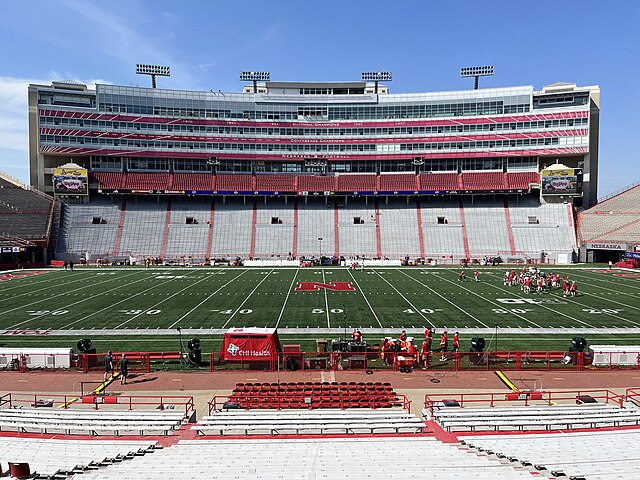
- Nickname: Death Valley
- Capacity: 81,500
- Established: 1942
Since 1942, Memorial Stadium(AKA Death Valley) has been one of the loudest college football stadiums in the country. This stadium is home to the Clemson Tigers, who are always one of the ACC’s top teams.
Whenever the Tigers take the field, the crowd roars as their theme song, “Running Down The Hill,” plays. The crowd noise level can reach up to 130 decibels on gameday, especially when Clemson plays against South Carolina.
8. Beaver Stadium(Happy Valley)- Penn State Nittany Lions
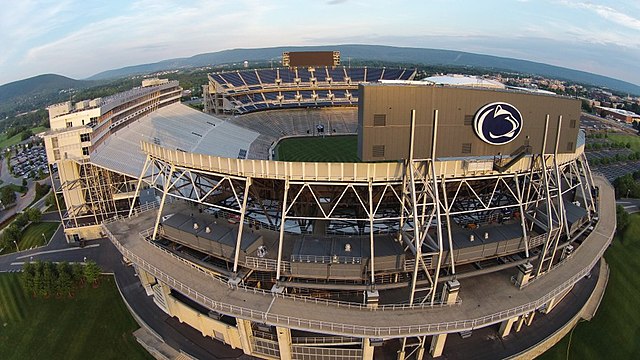
- Capacity: 106,572
- Nickname: Happy Valley
- Established: 1960
There’s nothing like a game in Happy Valley at Beaver Stadium, which is one of the loudest college football stadiums. Since 1960, Beaver Stadium has been home to the Penn State Nittany Lions, with a massive capacity of over 100k fans.
Easily, the loudest game of the year is the Nittany Lions’ annual “White Out” game. During this game, the crowd noise level can exceed well over 120 decibels. This raucous crowd makes Beaver Stadium a hard place for visiting teams to come in and get a win.
https://www.stadiumpennsylvania.com
7. Neyland Stadium- Tennessee Volunteers

- Capacity: 101,915
- Established: 1921
Knoxville, Tennessee is not only home to one of the ten loudest college football stadiums, but one of the oldest. Neyland Stadium has been home to the Tennessee Volunteers football team for over a decade.
The Tennessee alumni’s love for this stadium has kept it standing with numerous renovations over the years. Tennessee University’s beloved stadium now holds over 100k fans for every home football game.
Every time the Tennessee band plays “Rocky Top,” it feels like an earthquake is hitting Neyland Stadium.
https://www.knoxvillestadium.com/
6. Bryant-Denny Stadium- Alabama Crimson Tide
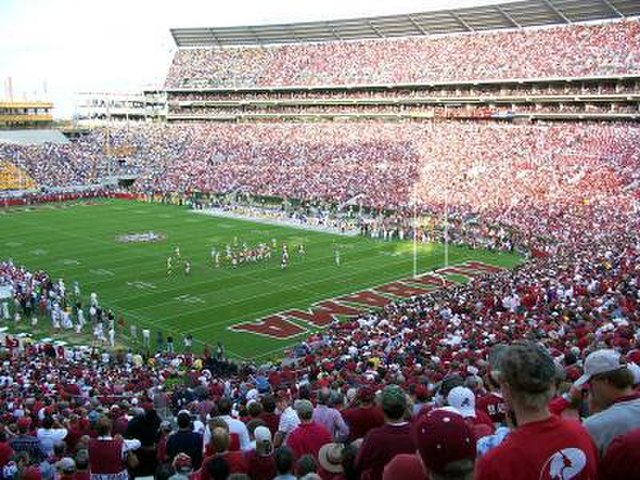
- Capacity: 100,077
- Established: 1929
No list of the ten loudest college football stadiums would be complete without mentioning Bryant-Denny Stadium. The home of the Alabama Crimson Tide has seen numerous championship teams on its field for almost 100 years.
The stadium was originally just Denny Stadium, but legendary coach Bear Bryant’s name was later added. After numerous renovations, Bryant-Denny Stadium now holds 100,077 Crimson Tide fans for every home game in Tuscaloosa.
https://www.tuscaloosastadium.com/
5. Kyle Field- Texas A&M Aggies
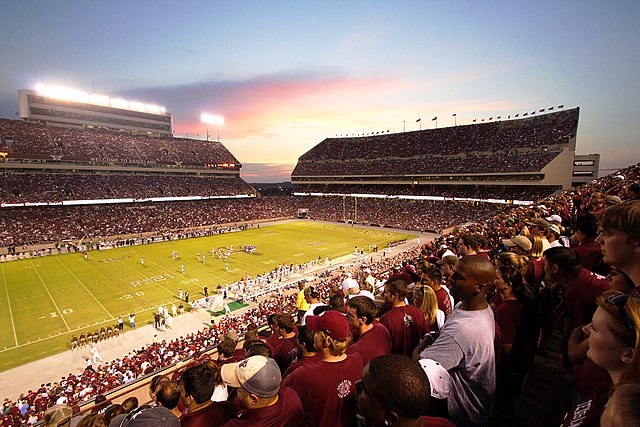
- Capacity: 102,733
- Nickname: Home of the 12th Man
- Established: 1927
The Home of the 12th Man, or Kyle Field in College Station is another one of the ten loudest college football stadiums. Since 1929, the roar of the 12th Man has been making College Station, Texas, shake for every home game.
Of the whopping 102,733 capacity that Kyle Field holds, 40,000 seats belong to Texas A&M students. The stadium frequently tops out at over 120 decibels and even more when rival Texas comes to play in College Station.
4. Ben Hill Griffin Stadium(The Swamp)- Florida Gators
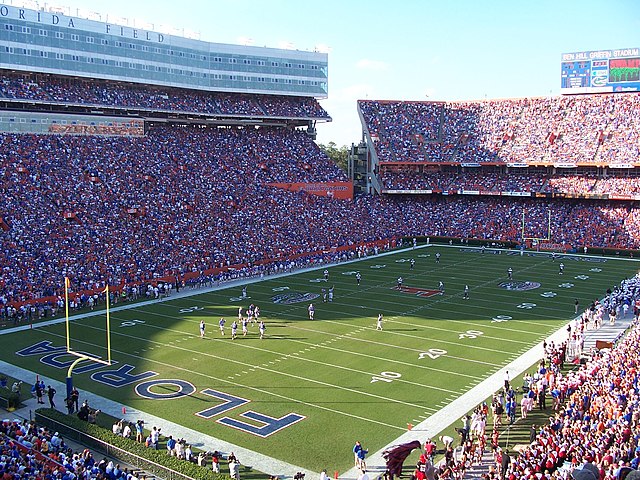
- Capacity: 88,548
- Nickname: The Swamp
- Established: 1930
Ben Hill Griffin Stadium(AKA The Swamp) is easily one of the ten loudest college football stadiums in the country. The Swamp in Gainesville has seen numerous top Florida Gator teams take the field over the years.
During the Tim Tebow era in the 2000s, nobody wanted to go into The Swamp and deal with the crowd noise. When the Gators are winning, Ben Hill Griffin Stadium is rocking and a hard place for visiting teams to play.
https://www.gainesvillestadium.com/
3. Michigan Stadium(The Big House)- Michigan Wolverines
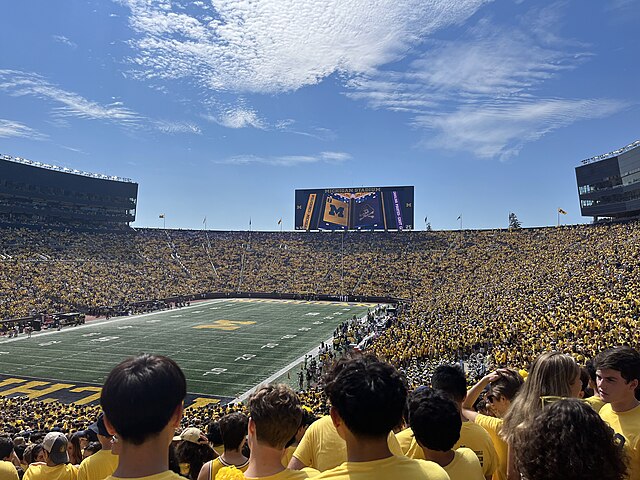
- Capacity: 107,061
- Nickname: The Big House
- Established: 1927
Since 1927, Michigan Stadium(The Big House) has been one of the ten loudest college football stadiums. The Big House holds a century of history and one of the most successful college football programs.
After numerous renovations, Michigan Stadium now holds a whopping capacity of 107,061. Decibels within the open-air stadium can easily reach over 120 at every home game.
Whenever the Wolverine’s nemesis, Ohio State, comes to town, the noise can be heard throughout Ann Arbor, Michigan.
https://www.thebigstadium.com/
2. Auzten Stadium- Oregon Ducks
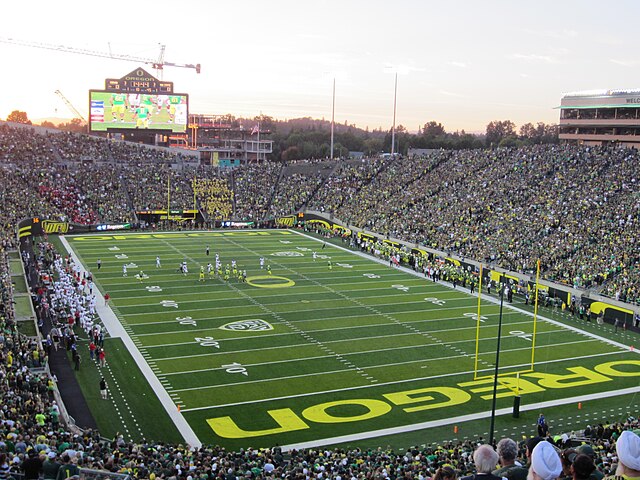
- Capacity: 54,000
- Established: 1967
Despite only having a capacity of 54,000, Auzten Stadium is easily one of the ten loudest college football stadiums. This stadium located in Eugene, Oregon has one of the most unique auras in all of college football.
The design of the stadium, mixed with the noisy Oregon Duck fans, traps noise within the stadium. Whenever the visiting team’s offense takes the field, the noise is deafening and causes chaos for them.
Oregon fans can make up to 130 decibels of noise at every home football game.
https://www.eugenestadium.com/
1. Tiger Stadium(Death Valley)- LSU Tigers
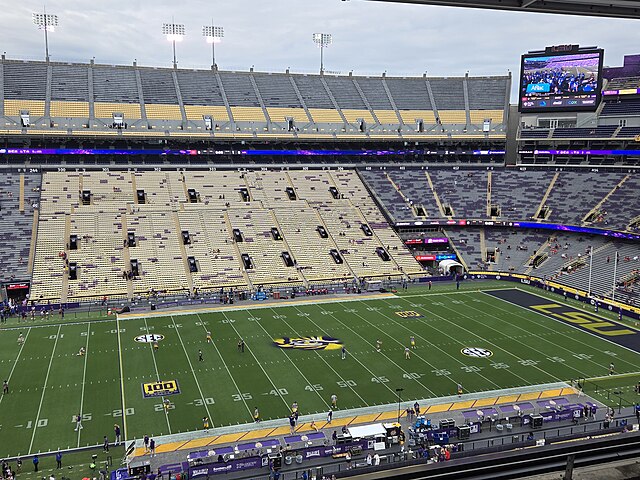
- Capacity: 102,321
- Death Valley
- Established 1924
Easily on the top of the list of the ten loudest college football stadiums in the US is Tiger Stadium. Also known as “Death Valley,” the home of the LSU tigers is one of the most incredible spectacles in college sports.
With a capacity of 102,321, Tiger Stadium is known as the loudest college stadium in the country. The noise of the Tiger faithful during games has even hit the seismic chart as a minor earthquake.

